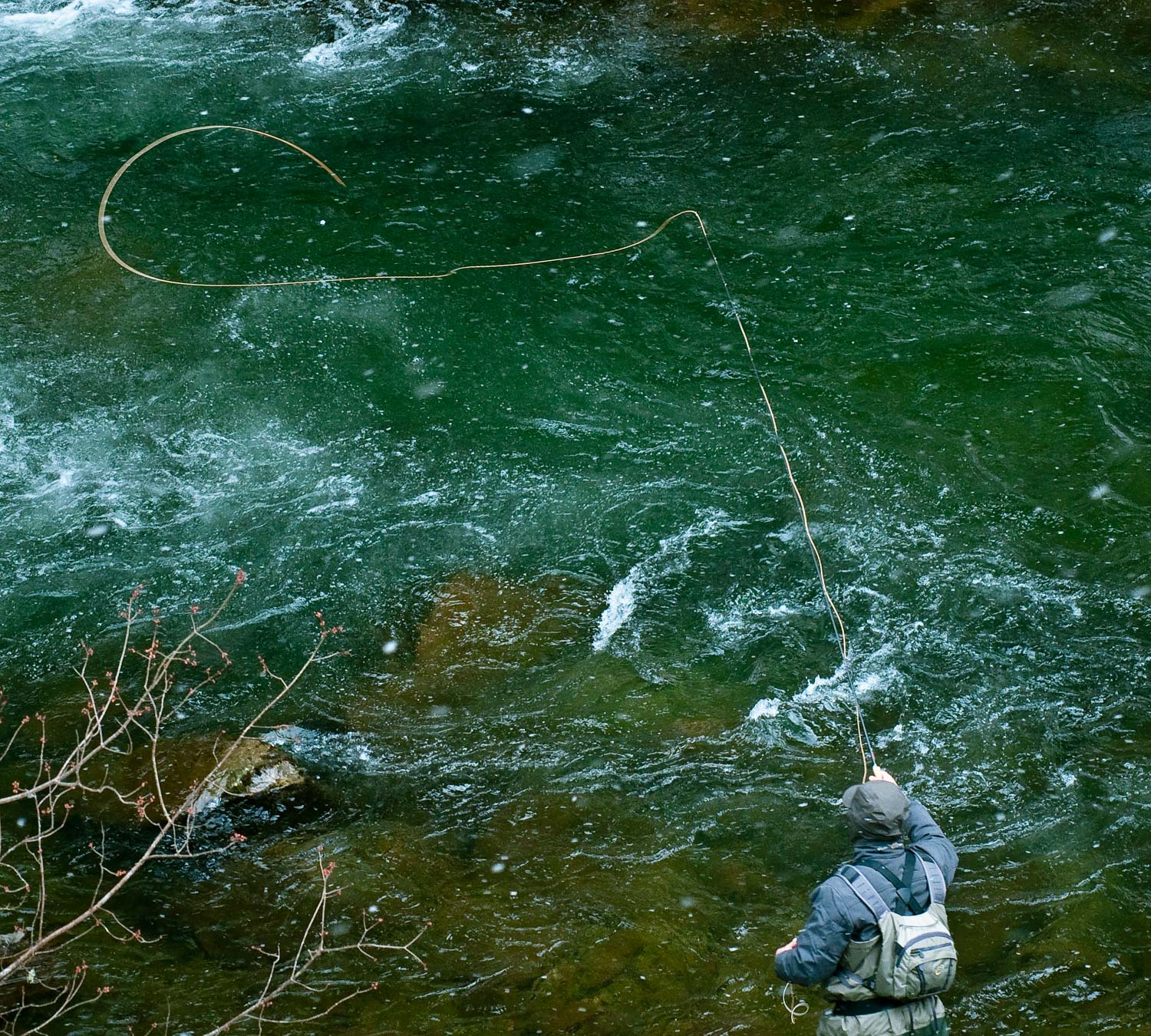Do you ever find yourself on the water when a regular mend won’t provide you with a long enough drag free drift to catch trout?
This usually occurs when you’re trying to get a drift across multiple currents on the far bank or when you’re trying to fish a soft seam, adjacent to faster water, that’s too far away from you to high-stick. In these two situations, a standard mend will usually not provide you with enough slack to keep your dry fly drifting naturally to the position of the rising trout or give your nymphs enough time to sink down into the strike zone.
When I find myself fly fishing in this situation, I often will add a roll cast mend a few seconds after my initial mend. Doing so, it provides me with the extra slack needed in my fly line to help counter the negative effects of the surface currents that are pulling on my fly line and destroying my drag free drift. The roll cast mend also allows me to reposition my fly line during my drift so I can keep the majority of it floating in the same current speed as my leader and fly/flies.
Instead of you stripping in the extra slack after your first mend, use that slack as you’re raising your rod tip to form the d-loop and execute your roll cast mend. You’ll want to target your roll cast to land behind your drifting fly/flies to provide you with the extra slack needed to extend your drag free drift. The roll cast mend is a advanced mend that takes a little while to master, but once you get it down, you’ll find yourself utilizing it all the time on the water when you need a few seconds more of drag free drift to catch trout.
Keep it Reel,
Kent Klewein Gink & Gasoline www.ginkandgasoline.com hookups@ginkandgasoline.com Sign Up For Our Weekly Newsletter!
